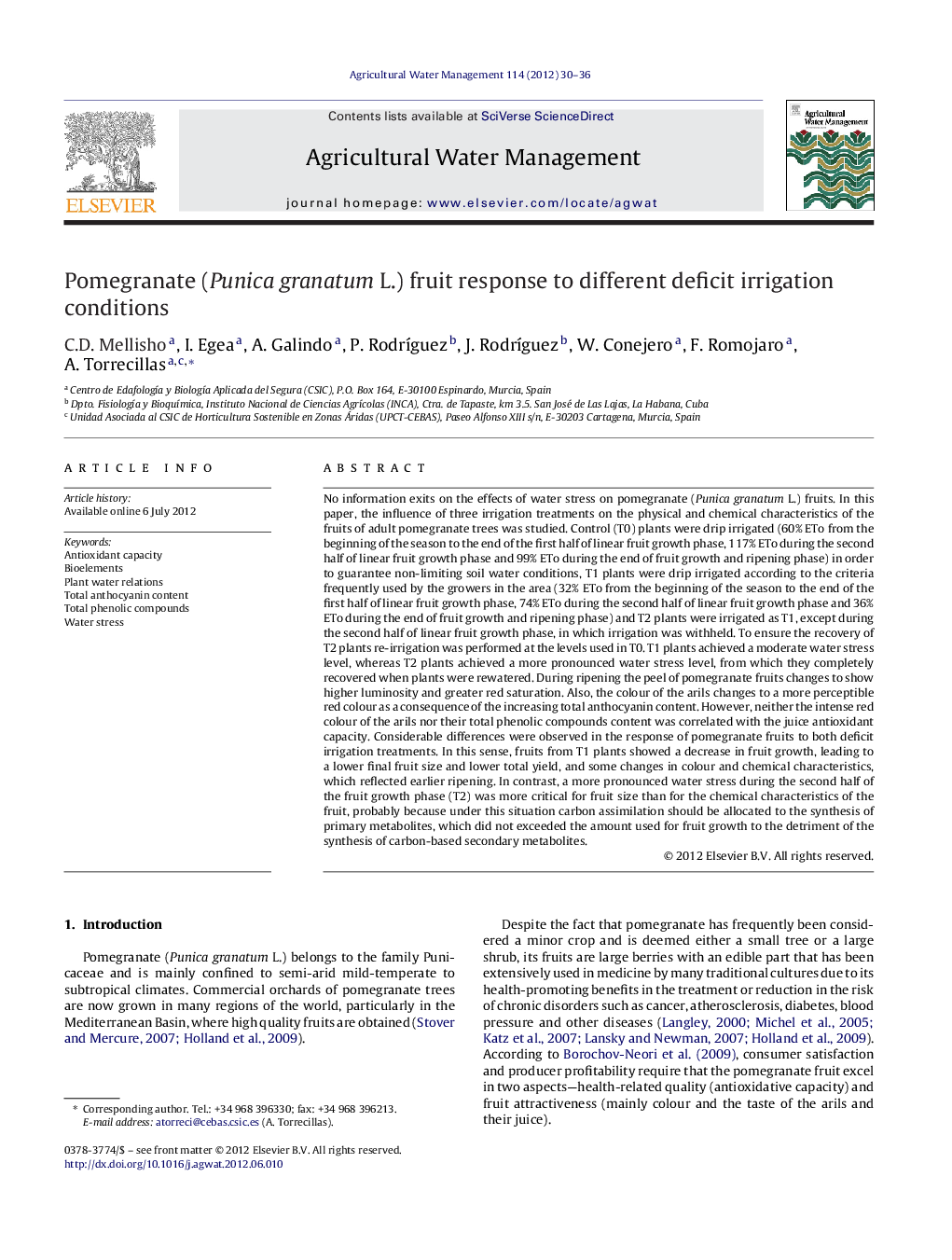| کد مقاله | کد نشریه | سال انتشار | مقاله انگلیسی | نسخه تمام متن |
|---|---|---|---|---|
| 4479081 | 1622965 | 2012 | 7 صفحه PDF | دانلود رایگان |

No information exits on the effects of water stress on pomegranate (Punica granatum L.) fruits. In this paper, the influence of three irrigation treatments on the physical and chemical characteristics of the fruits of adult pomegranate trees was studied. Control (T0) plants were drip irrigated (60% ETo from the beginning of the season to the end of the first half of linear fruit growth phase, 117% ETo during the second half of linear fruit growth phase and 99% ETo during the end of fruit growth and ripening phase) in order to guarantee non-limiting soil water conditions, T1 plants were drip irrigated according to the criteria frequently used by the growers in the area (32% ETo from the beginning of the season to the end of the first half of linear fruit growth phase, 74% ETo during the second half of linear fruit growth phase and 36% ETo during the end of fruit growth and ripening phase) and T2 plants were irrigated as T1, except during the second half of linear fruit growth phase, in which irrigation was withheld. To ensure the recovery of T2 plants re-irrigation was performed at the levels used in T0. T1 plants achieved a moderate water stress level, whereas T2 plants achieved a more pronounced water stress level, from which they completely recovered when plants were rewatered. During ripening the peel of pomegranate fruits changes to show higher luminosity and greater red saturation. Also, the colour of the arils changes to a more perceptible red colour as a consequence of the increasing total anthocyanin content. However, neither the intense red colour of the arils nor their total phenolic compounds content was correlated with the juice antioxidant capacity. Considerable differences were observed in the response of pomegranate fruits to both deficit irrigation treatments. In this sense, fruits from T1 plants showed a decrease in fruit growth, leading to a lower final fruit size and lower total yield, and some changes in colour and chemical characteristics, which reflected earlier ripening. In contrast, a more pronounced water stress during the second half of the fruit growth phase (T2) was more critical for fruit size than for the chemical characteristics of the fruit, probably because under this situation carbon assimilation should be allocated to the synthesis of primary metabolites, which did not exceeded the amount used for fruit growth to the detriment of the synthesis of carbon-based secondary metabolites.
► No information exists on the pomegranate fruit response to irrigation.
► Irrigation criteria used by the growers in the area have to be improved.
► Deficit irrigation leads to changes in fruit colour and some chemical characteristics.
► Neither arils red colour intensity nor total phenolic compounds are related with antioxidant capacity.
Journal: Agricultural Water Management - Volume 114, November 2012, Pages 30–36